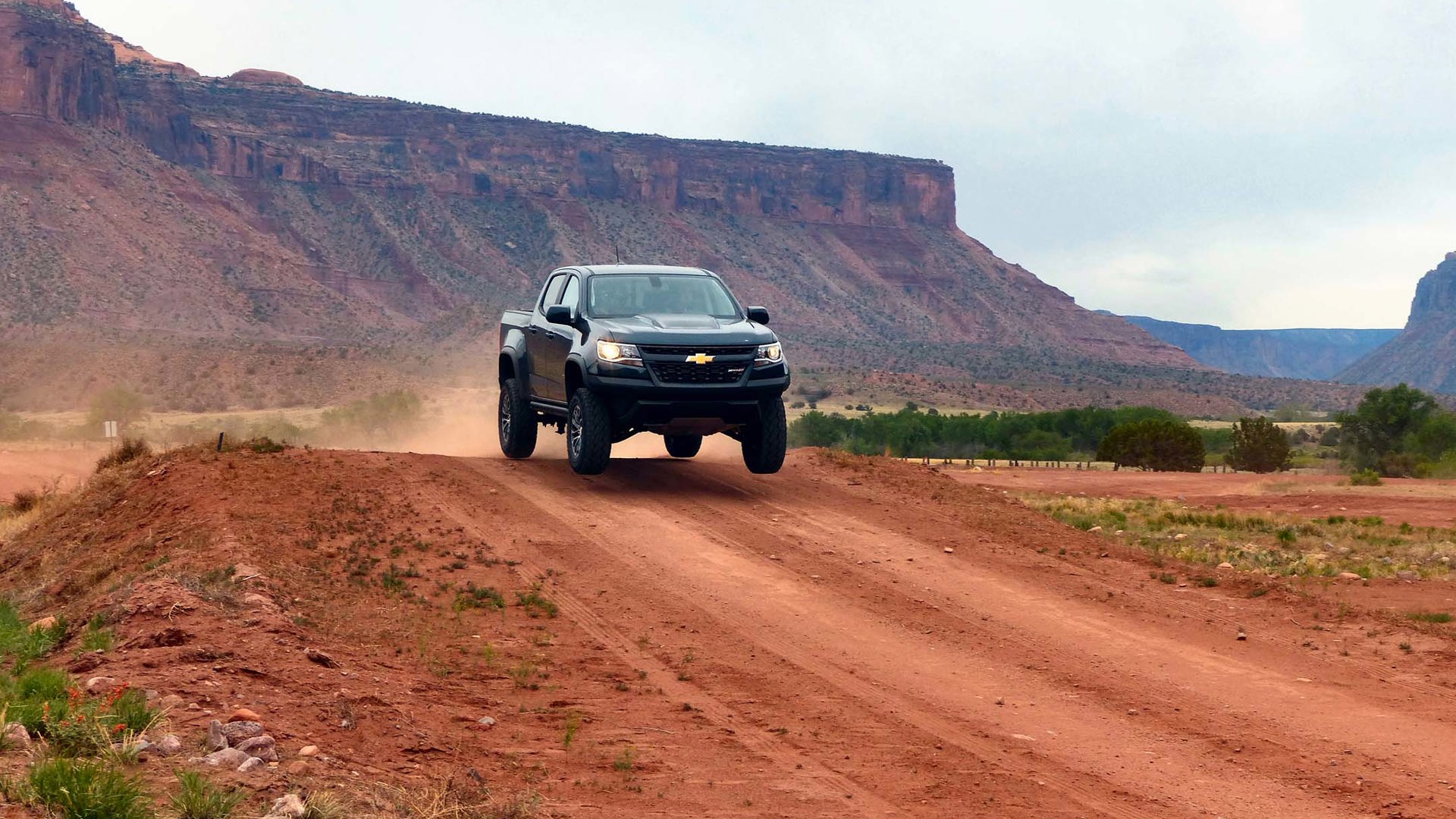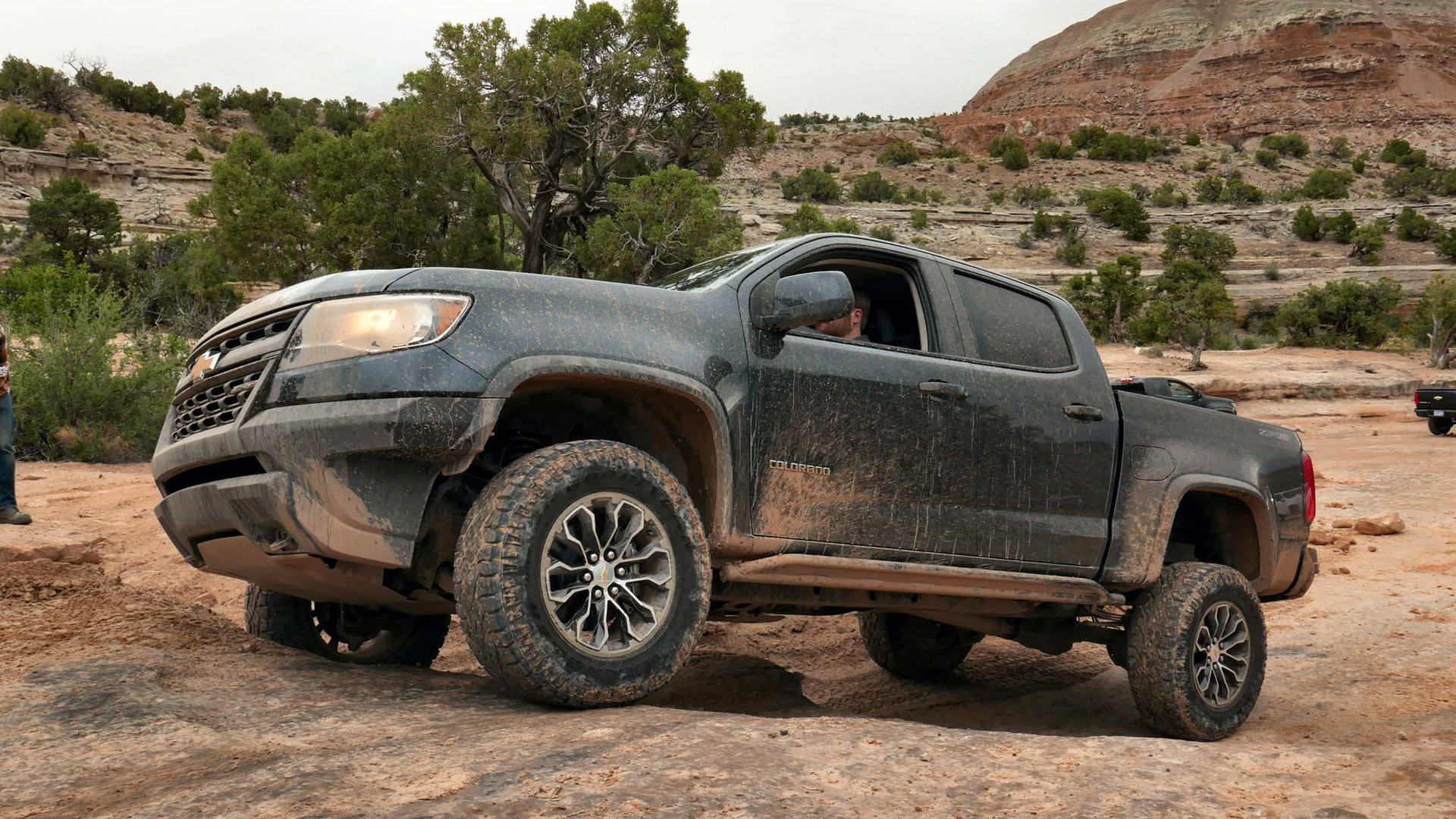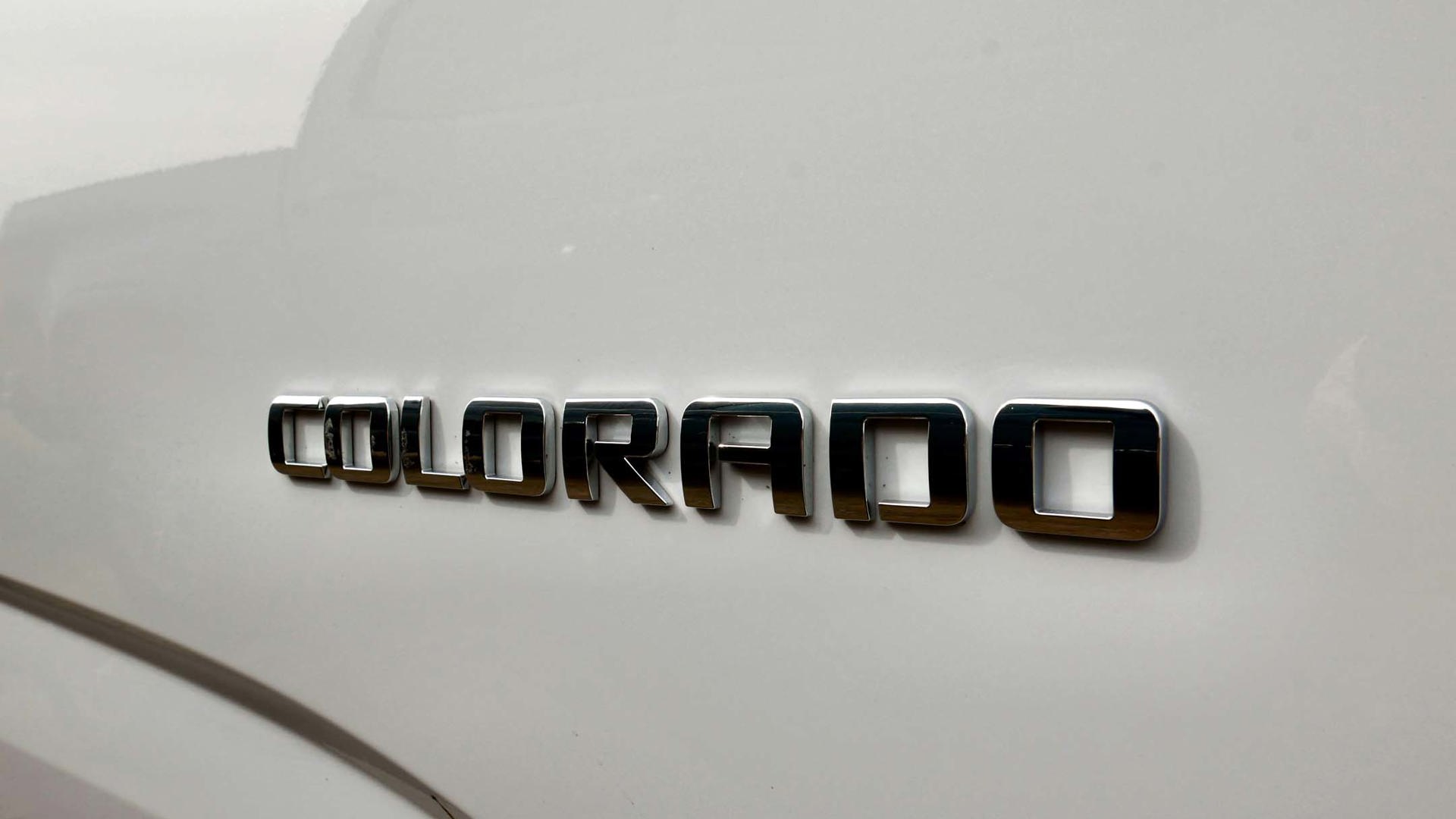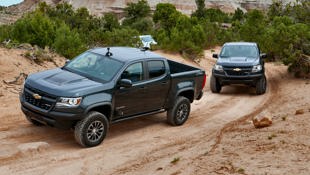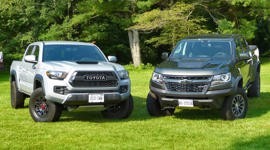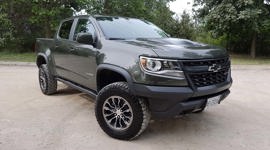When the battle for market share in one of the most profitable segments in the auto industry heats up, sometimes the best strategy is to take the fight right to your enemy’s door. But what do you do when you have to ford streams, cross deserts, and climb mountains just to get there? If you’re Chevrolet, you shrug your shoulders, say “No problem,” and aim the all-new 2017 Colorado ZR2 straight up into the rocky peaks that the Toyota Tacoma TRD Pro calls home.
General Motors has linked up with the engineering talent at Canada’s own Multimatic in order to transform the ZR2 into a high-tech challenger
Chevy’s no stranger to the details of trail driving, having offered the Z71 off-road package on most of its pickups, large and small, for decades. Even the ZR2 moniker isn’t a new one, having been last seen on the old Chevrolet S10, a truck that went out of production in 2004, and which offered a fairly aggressive take on all-terrain transportation. Still, the previous-generation Colorado was never known for go-anywhere heroics, ceding much of that demographic to Toyota’s TRD Off-Road and, later, TRD Pro editions of the Tacoma.
That all changes for 2017, as General Motors has linked up with the engineering talent at Canada’s own Multimatic in order to transform the ZR2 into a high-tech challenger to Toyota’s near-undisputed dominance amongst mid-size adventurers. Those who remember the older ZR2 will recognize a few of the same touchstones on the most recent model – a wider track (3.5 inches), grip-tastic 31-inch tires (Goodyear Duratracs), additional ground clearance, and a locking rear differential – but a deeper dive into the spec sheet reveals a number of details that wouldn’t have even been dreamed of by the original ZR2’s design team.
In fact, there’s one key aspect of the 2017 Chevrolet Colorado ZR2’s proposition to would-be boulder bounders that can’t be found even on the off-road aftermarket: DSSV suspension. Blow that acronym out to “dynamic suspension spool valve” technology, and you’ve got a difference-maker sitting under the ZR2’s chassis that vaults the truck into next-generation control and capability once you leave the pavement behind.
It’s not surprising that Multimatic partnered with Chevrolet in developing DSSV for the Colorado, given that the two had previously worked together on a track-oriented version of the tech for the Camaro Z28. After having experienced DSSV outside the confines of a race course, however, I’m surprised it took this long for a manufacturer to tap on the shoulders of the Markham, Ontario-based squad and slap it under a pickup.
At its core, DSSV relies on spool valves rather than shims for the inside of the Colorado ZR2’s shock absorbers to control fluid flow. Compared to a traditional external reservoir off-road damper – like what you’d find on the TRD Pro, or even the Ford F-150 Raptor – spool valves offer as much as three times the granularity when tuning how the shock responds in both extreme rebound and compression as well as during regular commuting. Each shock offers two spool valves mounted in the damper body as well as a piston-mounted spool valve that together deliver repeatable chassis control that’s remarkably resistant to frothing and heat – two off-road stressors that not even GM’s excellent Magnetic Ride Control system can handle.
In practice, DSSV works like an almost-invisible charm. On the snake-like roads linking Grand Junction, Colorado, to the resort that served as our base in the state’s high desert, the Colorado ZR2 exhibited none of the bounce or roll of its stiffer Z71 counterpart – nor any of the squishy, “Where are the wheels pointed now?” sensation imparted by the larger Raptor’s older-tech shock setup. This excellent day-to-day driving composure came bundled with an incredible level of control when launching the ZR2 off of a table jump or sandy mogul at nearly 90 km/h, with the Chevy sticking each landing to the dirt like an all-metal Nadia Comaneci. Try doing the same in a Tacoma, and you risk banging your head right through its ceiling.
Head to the hills and the Colorado ZR2 is equally at home, its excellent wheel articulation backed up by the ability to electronically lock not just the rear axle, but also the front – a boon when attempting to find purchase on the slippery all-stone “staircase” we found waiting for our group of Chevys at the end of one particularly challenging trail. Also appreciated was the way the mid-size Chevy snaked its way through narrow passages that would have sent bigger bro-trucks – ahem, Raptor – seeking another way around. You don’t get Raptor levels of grunt from either the ZR2’s 308 horsepower, 3.6-litre V6 or its available 2.8-litre, four-cylinder diesel, but you can park it under your condo at night, which for some buyers will no doubt be more important.
It’s hard to tell what’s more fun: locking all of the Chevrolet’s axles and engaging low-range for some carefully measured rock crawling, or simply engaging the exuberant “Off-Road Mode” and sliding sideways around a dirt circuit with the two rear wheels throwing up sand like a jet-ski. Or maybe the best part is the fact that there’s finally a ruggedized pickup available outside of the Toyota brand that’s reasonably sized, somewhat affordable (with a price projected to be under $50,000), and virtually sacrifice-free to drive on a daily basis. On second thought, given that the Colorado ZR2 is, well, all of these things, I really don’t have to choose, do I – and isn’t that kind of the point?

